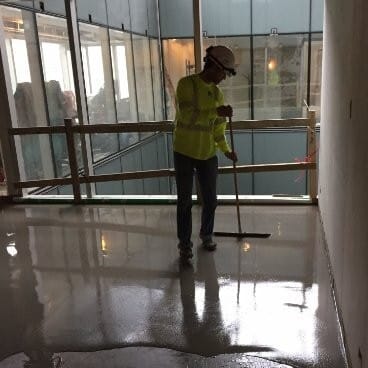
Nobody wants to create a beautiful floor only to have it ruined by something as correctable as bond failure. Surface preparation is an essential part of preventing this relatively common occurrence form ruining what could be an amazing floor. The right type of surface preparation can make your floor more durable, stronger, and long-lasting than it otherwise can be. Not to mention, it also allows you to enjoy the aesthetic of a brand new floor for a longer period of time.
You can enjoy your new floor more when you know that it’s going to stick around for a while. Here are the two most important steps to preventing bond failure right at the source.
Preparing the Substrate
Beneath your flooring is always going to be another layer known as your substrate. In most cases, the substrate is going to be concrete that may or may not have had another flooring product installed over top of it previously. Taking care of this concrete properly is the first step in preventing bond failure. You can start here by cleaning the substrate of any chemicals, oils, or greases that may have covered the surface at any point. This prevents other chemicals from interfering with your new coating.
From here, you need to take care of any damaged areas on the concrete. Major cracks, holes, unevenness, and other issues can all lead to bond failure. Sometimes, the easiest thing to do is to install a self-leveling compound that can fill in these holes and level itself out to prepare for the very next stage of preparation. This is an essential step that cannot be missed if you want to prevent bond failure with your new flooring compound.
Determining Surface Profile
One of the simplest ways to prevent bond failure from occurring is by preparing the floor with the appropriate surface profile. This can take place once you have tended to all of the damaged areas of the concrete substrate that will not be able to receive new flooring. Once you have a smooth surface to work with, you need to determine what type of texture will work best for the proper adhesion of your flooring product.
Depending on the unique needs of each location, you might select diamond grinding, scarification, or an enclosed shot blasting method of adding more texture to the substrate. Concrete can be profiled according to a rating system where one is the smoothest and ten is significantly coarser with great divots and texture. The higher concrete surface profiles tend to have more grip that is better for certain types of coating. You have to know what the manufacturer of your flooring product recommends before you can properly prepare the concrete.
When you really want to prevent bond failure from occurring, you need the help of the most qualified concrete repair company. Be sure to give TCF West a call to see how they can help your next project turn out beautifully without any bond failure!

